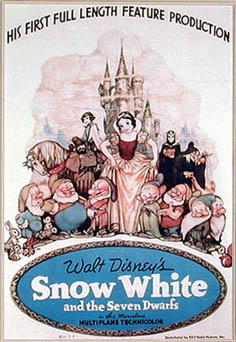|
|
The Independent Producers and the Paramount Case, 1938-1949
Part 1: The Hollywood Slump of 1938
As the studios recovered from the Depression, they knew that the provisional
protection of the Roosevelt administration, which supported block
booking with misgivings, would end once the NIRA
was struck down. It was only a matter of time before the studio system was
called into question. When Hollywood increased its production of A-list films in
an effort to attract a broader share of audiences in the mid-1930s, the industry
hoped that the improvement in overall film quality would make Hollywood less
deserving of the government's antitrust indignation.
 |
|
Joseph
Schecnk, former United Artists executive and charter member of
Twentieth Century-Fox.
|
|
A couple of years later when a noticeable dearth in topnotch studio releases
hit Hollywood, the studios' plans to pacify the government's antitrust concerns
were jeopardized. In 1938 the studios dealt with an increasing dissatisfaction
from the public and the press complaining about the slump. Carl Laemmle, no
longer in control of Universal, told the New York Times, "Everywhere
I go and everybody I have spoken to during the past year has complained about
the same thing-bad pictures."
That September, Joseph M. Schenck at Twentieth Century-Fox commented on a
particularly miserable season, "Also, there was a period during the early
Summer when there were practically no good new pictures coming along. Three or
four weeks of poor pictures had a damaging effect upon business." The
perceived decline in film quality came on the heels of the economic recession in
late 1937 and early 1938. By the end of the first quarter of 1938, the combined
profits of the Big Eight had already dropped 47 percent from the previous year.
 |
|
Original
movie poster for Snow White and the Seven Dwarfs, first
released in December 1937.
|
|
Opponents of Hollywood observed, as the independents would have them believe,
that the major studios were stagnant and dry of ideas. Out of the hundreds of
films in release, there was one standout film that received practically
universal critical praise, and surpassed all industry records to become the
highest grossing film up to that point with over $8 million at the box office.
That blockbuster was Walt Disney's Snow White and the Seven Dwarfs, not a
star-studded studio prestige project but an independently-produced feature
animation experiment that embarrassingly outdistanced the studio powerhouses.
The majors referred to 1938 as an off season. (And of course, Hollywood's big
year was just around the corner). However, at the time, the slump gave
ammunition to the detractors of the studio system. An editorial in Variety
blamed block booking as the culprit: "The wonder is not the scarcity of
outstanding, smashing film hits, but that under the present system of industry
operation there are any hits at all."
The United States Department of Justice took advantage of the window of
opposition to announce its suit against the Hollywood oligopoly on July 20,
1938. The defendants included
Hollywood's eight major studios, 25 of their affiliated companies, and 132
executive officers—all accused of monopolization in restraint of trade.
According to the 22,600-word, 119-page complaint drafted by Assistant Attorney
General Thurman Arnold, the government was reacting to "numerous complaints
by independent producers, distributors, and exhibitors and by the theatre-going
public." Film attorneys expressed surprise that the lengthy complaint
abandoned the use of precise legal phraseology that was standard for almost
every petition of its kind. The Paramount petition, they said, was
written in the non-legal language of the trade.
CLICK HERE for a complete list of
individual defendants in the Paramount case
MORE:
SOURCES:
Hollywood in slump 1938: Variety, December 14, 1938.
“Everywhere I go”: Thomas M. Prior, “Uncle Carl Speaks
As He Pleases,” NYT, September 4, 1938, sec. X, p. 3.
“Also, there was a period”: Bosley Crowther, “In the
Opinion of Mr. Schenck,” NYT, September 11, 1938, sec. X, p. 3.
Profits decline for Big Eight: “47% Decline Shown In Picture
Profits,” NYT, June 12, 1938, sec. III, p. 1.
Justice Department initiates the Paramount suit: United
States v. Paramount Pictures, Inc. et al, 334 U.S. 131 (1948); “The
independent producer”: United States v. Paramount, petition filed July
20, 1938, p. 71; “Big Film Concerns Accused In U.S. Suit of Acting As
Trust,” NYT, July 21, 1938, p. 1; “Govt. Files Anti-Trust Action:
Eight Majors, Subsidiaries, Officers, Directors, Named In Justice Dept. N. Y.
Bill,” HR, July 20, 1938, p. 1; “U.S. Wallup for Film Majors,” DV,
July 20, 1938, p. 1; “Pic Stocks Down In Suit Reaction; Para. Pfd. Off $10,”
HR, July 21, 1938, p. 1: Paramount stock down $10 to $90, Loews down 3 ¾
to 52 ¼.
See Bibliography.
|